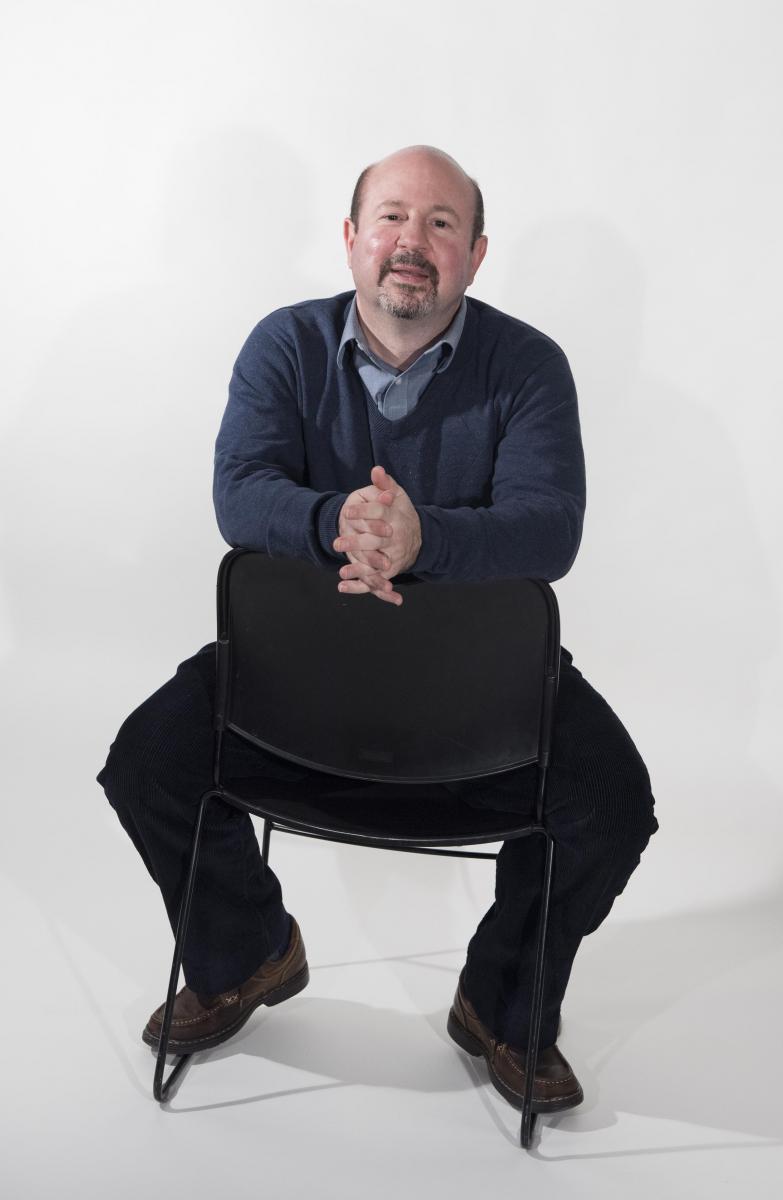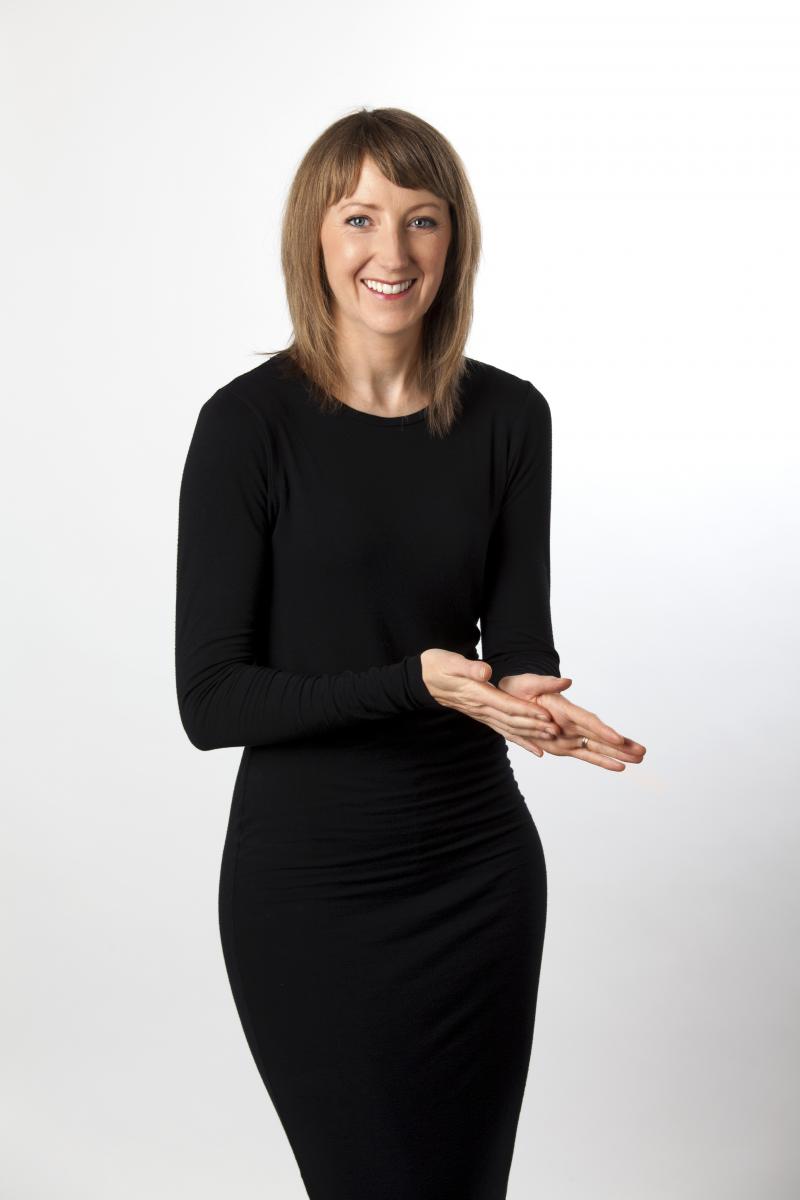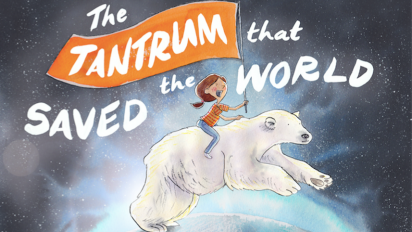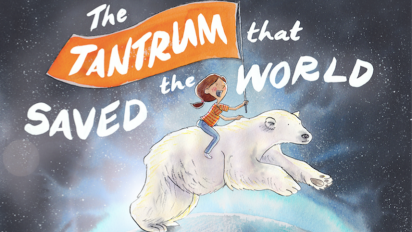 In a 2016 interview with NCSE, Michael E. Mann said, “If my science is going to be used as a proxy for the validity of the science of climate change, then I’m willing to fight.”
In a 2016 interview with NCSE, Michael E. Mann said, “If my science is going to be used as a proxy for the validity of the science of climate change, then I’m willing to fight.”
His most recent foray has come in an unusual form—a children’s book. Mann, a climate scientist at Penn State University, has teamed up with Australian illustrator and writer Megan Herbert to develop the charming and powerful book, The Tantrum that Saved the World.
After receiving my own copy and reading it to my daughters, I just had to ask them some questions. (Read a book review written by a fifth grade teacher and her students.)
What was your goal in writing this story?
Megan Herbert: When people feel overwhelmed by the enormity of the climate change issue, they tend to shut off their empathy valves. “This isn’t happening to me; it’s too big a problem; I’m powerless to help.” My goal, in writing this book, was to help people—both children and adults—to reengage with their empathy. Because when we feel empathy, we are moved to act.
I also wanted kids to learn that climate change is not a huge, scary, abstract issue, but rather a collection of smaller issues connected by a common cause that affect individuals and that can be addressed individually. By breaking big problems into smaller parts, and coming up with individual solutions, we can work together to make a real difference.
Michael E. Mann: Climate change has unfortunately become a partisan political issue in this country, and that means that conventional approaches to communicating the science and its implications are not always effective. I’m always looking for novel approaches and collaborations to help get the word out.
I was deeply influenced by Dr. Seuss and the Lorax as a child. It constituted my first moment of environmental awareness. I shared that same experience with my 12 year old daughter when she was younger. Such books can be formative for a child, but they are also aimed at the parent. Reading to or with your child is a shared intergenerational experience. The child certainly learns from the parent. But the parent too learns—in an affective sense—from the child. We’re trying to reach both.
I was so taken by your ability to write a story about a child, for children, that did not oversimplify nor overwhelm. There is also very little data in the book. Was that purposeful?
MH: Storytelling is the most powerful tool of communication there is. Kids engage with characters and how they overcome struggles, so to me, that was the best way to get children to care about this issue. And when children care about an issue, it usually follows suit that their parents and grandparents care about it too! I have a 5-year-old son and he was very much in mind during the writing of this book. Data is simply not something he would either be able to understand or be interested in. Also, while data changes constantly, stories have the ability to be timeless and universal. And this story – about a little girl making new friends and then overcoming challenges in order to help them – is just that.
How did you pick the seven climate refugees featured in your book?
 MEM: Considerations of diversity—both with respect to our animals and our people—were critical. Each is threatened by climate change in a different yet interconnected way. The theme of the interconnected of all living things is a critical one in the book. We all depend on each other and our planet. Earth is the only planet we know of in the universe that supports life. Let’s take care of it. That’s the ultimate message here.
MEM: Considerations of diversity—both with respect to our animals and our people—were critical. Each is threatened by climate change in a different yet interconnected way. The theme of the interconnected of all living things is a critical one in the book. We all depend on each other and our planet. Earth is the only planet we know of in the universe that supports life. Let’s take care of it. That’s the ultimate message here.
MH: With the humans affected, I thought it was important to highlight the different sorts of problems we’ll face as a result of climate change—job loss is explored with the plight of the fishers, the i-Kiribati’s forced migration due to rising seas, and the onset of civil war that we see coming from highly volatile regions such as Syria. Of course, I had to couch the last one carefully, not wanting to frighten young readers. But I did want them to think about how dried-up farmland in a distant place can have drastic knock-on effects for everyone. I wanted to remove the idea of an us and them so kids and adults can experience empathy for what people in other parts of the world are going through.
What is your favorite line or illustration from the book?
MH: It’s when Sophia, the heroine, goes through her big emotional transformation. She is about to give up, but then rallies when her new friends comfort her and tell her their stories. It’s at that moment that she knows she has to persist: “Sophia thought deeply and then made her choice… She had to give those who’d been silenced a voice.” I’m only slightly embarrassed to admit that I cry every time I read this line.
MEM: It would be the final image of Sophia with the polar bear, as she asks for “The President’s office, please.” It is empowering, something I feel is particularly important for young girls, but for boys as well.
Okay, one silly question: At the end of the story, Sophia is seen giving the polar bear an ice-bath. It looks like he’s moved in. If you had to have one of your non-human animal climate refugees stay in your house indefinitely, which one would it be and why?
MEM: The polar bear would be hard to feed and take care of, my daughter is scared of bees, I don’t think my two housecats would welcome a tiger, I couldn’t provide a sea turtle with a suitable habitat ... so, by process of elimination, I guess it’d be the flamingo!
MH: As a beginner gardener, and someone fond of a drop of honey in my tea, I’ll definitely take the bees!
What would you say to a critic who suggests that the book’s ending, with Sophia’s tantrum saving the world, is wishful thinking?
MH: Pessimists are rarely world-saving heroes! So a hopeful ending is essential if we want to inspire kids (and the adults in their lives) to act.
MEM: Wishes don’t come true without wishful thinking.
A modified version of this post originally appeared in Reports of the National Center for Science Education 38(3). If you like this interview, you're going to love the whole issue.



